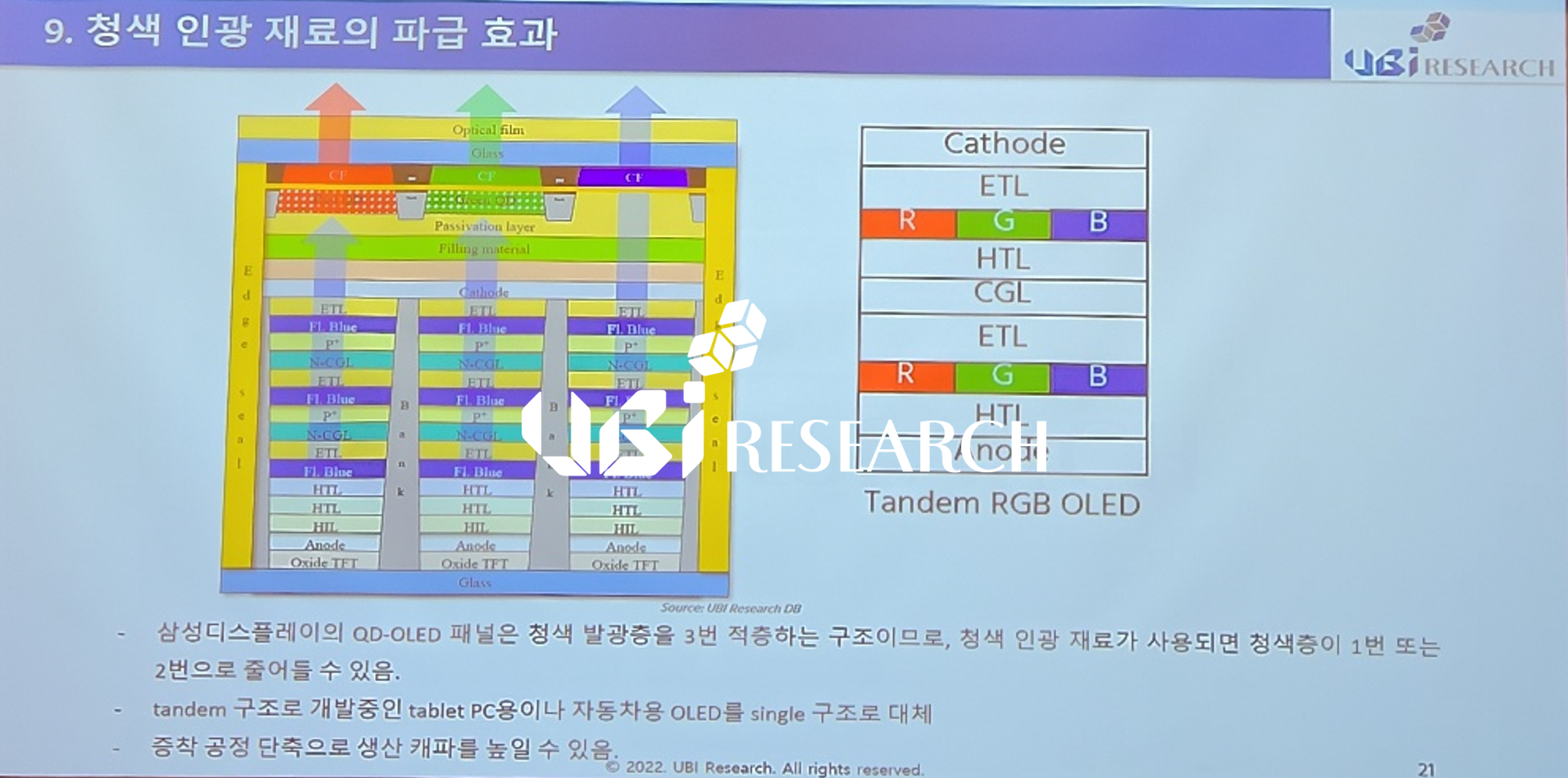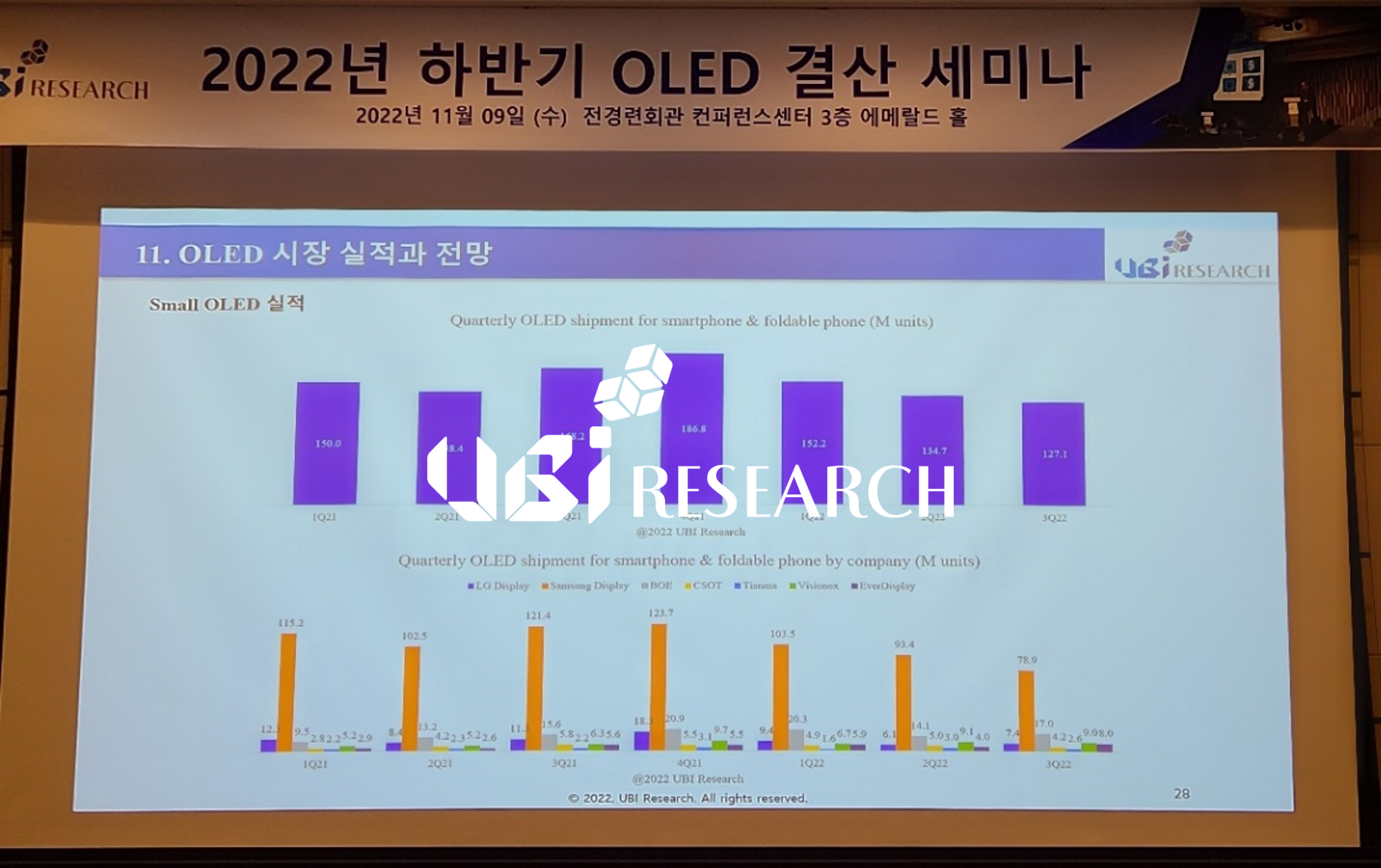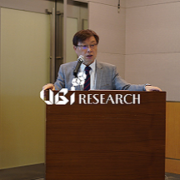Blue Phosphorescent Material Will Be a Turning Point in the OLED Market [2022 Second Half OLED Seminar]

UBI Research, Ripple effects of blue phosphorescent materials (Second half of 2022 OLED Seminar)
At the ‘The Second Half of 2022 OLED Accounting Seminar’ held at the FKI in Yeouido on November 9, UBI Research CEO Choong-Hoon Lee predicted that the blue phosphorescent material, an essential condition for the expansion of the OLED market, would be developed in 2024 and commercialized in 2025.
CEO Lee said, “U.S. material company UDC is developing a blue phosphorescent material by mixing TADF with phosphorescent dopant. The lifespan and characteristics of the material are equivalent to those of fluorescent materials two years ago, and the development of blue phosphorescent materials can be a turning point in the OLED market due to the characteristics of mobile devices where power consumption is important.”

UBI Research, Ripple effects of blue phosphorescent materials (Second half of 2022 OLED Seminar)
Currently, Samsung Display’s QD-OLED has a structure in which a blue light emitting layer is stacked three times. If a blue phosphorescent material is used instead of fluorescence for QD-OLED, it is possible to replace the existing structure in which the blue light emitting layer is stacked three times with a structure in which the blue light emitting layer is stacked once or twice.
CEO Lee explained, “It is possible to replace not only smartphones and smart watches, but also OLEDs for tablet PCs and automobiles under development with a tandem structure with a single structure. The development of blue phosphorescent materials will accelerate the transition from LCD to OLED.”

UBI Research, Ripple effects of blue phosphorescent materials (Second half of 2022 OLED Seminar)
Next, CEO Lee continued his presentation on OLED market trends. The situation is not easy for Korean companies due to the deteriorating market conditions and panel price cuts by Chinese panel makers. According to UBI Research, Samsung Display’s smartphone OLED shipments in the third quarter of this year were 78.9 million units, down 35% from 121.4 million units in the same period last year.
CEO Lee Choong-hoon said, “If you look at OLED shipments by substrate, flexible OLED is similar to the same period of the previous year, but rigid OLED declined sharply. As Chinese panel makers cut rigid OLED panel prices, domestic companies’ position in the rigid OLED market is narrowing. Samsung Display may stop producing rigid OLED panels in the next year or so.” he analyzed.
Finally, even in the first half of 2023, despite the unfavorable OLED market conditions, OLED panel shipments for TVs are expected to increase slightly. CEO Lee said, “The number of OLED panels for TV from 8.7 million this year is expected to increase to 9.5 million next year. LG Electronics is expected to produce 4.5 million WOLED TVs and Samsung Electronics is expected to increase QD-OLED TV shipments from 450,000 this year to 1 million next year.” He added, “Although Samsung Electronics entered the OLED TV market, it remains to be seen whether the deterioration of the overall TV market will affect the OLED TV market expansion.”




